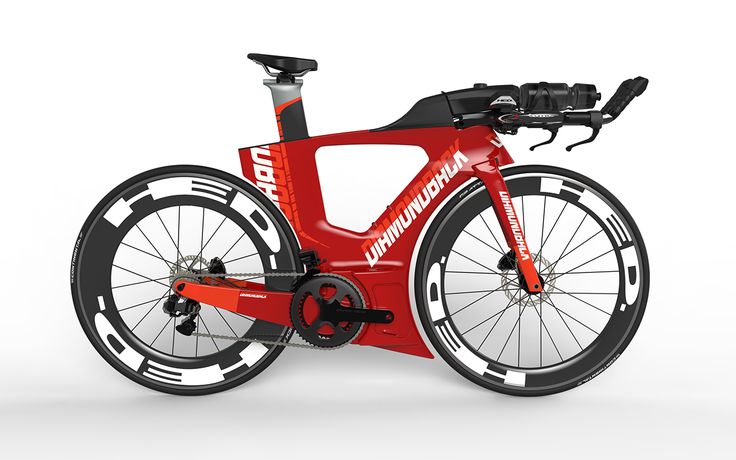The modern automobile is a marvel of engineering, a complex fusion of design, technology, and performance. At the heart of its continuous evolution lies a silent revolution in materials science. Gone are the days when steel was the sole king of automotive construction; a new era of advanced materials is now fundamentally reshaping how vehicles are designed, built, and perform. These innovative substances, often engineered at a microscopic level, offer an unprecedented combination of properties—from superior strength-to-weight ratios to enhanced safety and improved sustainability. This article delves deep into the fascinating world of advanced materials in the automotive industry, exploring their origins, the diverse categories that are transforming car manufacturing, their profound impact on vehicle performance and design, and the exciting future trends that promise to deliver even more revolutionary “rides.”
The Genesis of Automotive Material Evolution
For much of automotive history, steel was the undisputed champion. Its strength, ductility, and relatively low cost made it the go-to material for chassis, body panels, and structural components. However, as demands for fuel efficiency, safety, and performance grew, engineers began to push the boundaries of conventional materials.
The drive for material innovation in the automotive sector is primarily fueled by several critical objectives:
A. Lightweighting: Reducing vehicle mass directly translates to better fuel economy (for internal combustion engine vehicles) or extended range (for electric vehicles), as well as improved handling and acceleration. B. Enhanced Safety: Designing structures that can absorb crash energy more effectively, protecting occupants. C. Improved Performance: Creating components that can withstand higher stresses, temperatures, or allow for more precise engineering. D. Sustainability: Developing materials that are more recyclable, use fewer resources, or enable more efficient manufacturing processes. E. Design Freedom: Enabling more complex and aesthetically pleasing vehicle shapes and interior layouts.
This relentless pursuit of superior characteristics has led to a materials revolution, moving beyond incremental improvements in steel to the widespread adoption and development of entirely new classes of substances.
Diverse Categories of Advanced Materials in Automotive
The modern vehicle is a sophisticated blend of various advanced materials, each chosen for its specific properties and contribution to the overall performance envelope.
A. Advanced High-Strength Steels (AHSS)
While steel is still prevalent, it’s not your grandfather’s steel. Advanced High-Strength Steels (AHSS) are a family of specially processed steels designed to offer a superior combination of strength, ductility, and formability compared to conventional steels.
- Dual-Phase (DP) Steels: Exhibit high strength and good formability, making them ideal for complex structural parts and crash energy absorption zones.
- Transformation-Induced Plasticity (TRIP) Steels: Offer an excellent balance of strength and ductility, useful for parts requiring high energy absorption during a crash.
- Martensitic (MS) Steels: Extremely high strength, used for reinforcing pillars and side impact beams where maximum rigidity is needed.
- Boron Steels: Ultra-high strength, often hot-stamped into complex shapes for safety cages and anti-intrusion beams, providing exceptional occupant protection.
AHSS allows automakers to use thinner gauges of steel, leading to weight reduction while simultaneously increasing crash safety and structural rigidity.
B. Aluminum Alloys
Aluminum has emerged as a cornerstone of lightweight automotive construction, offering a significant weight advantage over steel without compromising strength, particularly in its alloyed forms.
- Body-in-White (BIW): Many modern vehicles, especially luxury cars, electric vehicles, and trucks (like the Ford F-150), utilize extensive aluminum in their BIW construction, including body panels, chassis components, and frame structures. This can lead to weight savings of 15-40% compared to a steel equivalent.
- Engine Components: Aluminum has long been used for engine blocks and cylinder heads due to its excellent thermal conductivity and lightweight properties.
- Wheels: Aluminum alloy wheels are standard on most vehicles, offering weight savings over steel wheels, which improves unsprung mass and handling.
- Extrusions and Castings: Aluminum is highly versatile in manufacturing, allowing for complex extruded profiles for structural members and intricate castings for suspension components.
Ongoing research focuses on new aluminum alloys that are even stronger, more formable, and more cost-effective to process.
C. Composites (Especially Carbon Fiber)
Composites, particularly Carbon Fiber Reinforced Polymers (CFRPs), represent the pinnacle of lightweight material technology in automotive applications, offering an unparalleled strength-to-weight ratio.
- Structural Components: Once exclusive to high-performance supercars (e.g., Lamborghini, Ferrari) and Formula 1 racing due to its cost, carbon fiber is increasingly finding its way into more mainstream vehicles, particularly electric vehicles. It’s used for monocoque chassis (like in BMW i3), body panels, roof sections, and structural members to offset battery weight and enhance performance.
- Exterior and Interior Trim: Beyond structural uses, carbon fiber is a popular choice for aesthetic components like spoilers, mirror caps, interior trim panels, and steering wheel accents due to its distinctive weave pattern and premium perception.
- Brake Rotors: Carbon ceramic brake rotors offer extreme heat resistance, fade resistance, and significant weight savings over traditional iron rotors, making them a must-have for high-performance vehicles.
- Glass Fiber Reinforced Polymers (GFRPs): More cost-effective than carbon fiber, GFRPs are used in less structurally critical areas like bumper beams, underbody shields, and certain interior components.
While still more expensive than metals, advancements in manufacturing processes (e.g., faster curing resins, automated layup) are slowly reducing the cost of carbon fiber, enabling its broader adoption.
D. Magnesium Alloys
Magnesium is the lightest structural metal, approximately 35% lighter than aluminum and 75% lighter than steel. While more reactive and challenging to work with than aluminum, its weight savings make it attractive for specific applications.
- Structural Castings: Used for components like engine blocks (in some high-performance engines), transmission cases, steering wheel armatures, and seat frames where maximum weight reduction is critical.
- Instrument Panel Beams: Magnesium alloys are often used for the cross-car beams that support the dashboard due to their lightness and stiffness.
Research continues into more corrosion-resistant and formable magnesium alloys to expand their use in automotive applications.
E. Advanced Polymers and Plastics
Modern polymers and plastics are far from the simple commodity plastics of the past. They are engineered for specific properties, offering lightness, design flexibility, and improved performance.
- Lightweighting: Used extensively for interior trim, dashboard components, door panels, fuel tanks, and intake manifolds. Their low density contributes significantly to overall vehicle weight reduction.
- Noise, Vibration, and Harshness (NVH) Reduction: Certain polymers are excellent at absorbing sound and vibration, contributing to a quieter and more refined cabin experience.
- Impact Absorption: Used in bumper fascias and energy-absorbing crumple zones, advanced plastics can deform predictably to absorb crash energy.
- Bioplastics and Recycled Plastics: Increasing focus on using bio-based polymers (derived from renewable resources) and recycled plastics to improve the environmental footprint of vehicles.
- Smart Polymers: Research includes polymers that can change shape, color, or electrical properties in response to stimuli, potentially leading to self-healing coatings or dynamic interior surfaces.
Impact on Vehicle Performance and Design
The integration of advanced materials is not just about swapping one material for another; it fundamentally redefines how vehicles perform, look, and are experienced.
A. Unprecedented Lightweighting
This is arguably the most significant impact. Every kilogram saved in a vehicle translates to:
- Improved Fuel Economy: For ICE vehicles, less mass means less energy required to move the vehicle, leading to lower fuel consumption and reduced emissions.
- Extended EV Range: For electric vehicles, lightweighting is crucial for maximizing range, directly addressing one of the primary consumer concerns. Less weight means the battery energy can propel the vehicle further.
- Enhanced Performance: Lighter vehicles accelerate faster, brake shorter, and handle with greater agility. Reduced unsprung mass (e.g., lighter wheels) significantly improves suspension response and road holding.
- Lower Production Costs (Indirectly): While advanced materials can be more expensive, the overall cost reduction from smaller engines, lighter braking systems, and less energy consumption during manufacturing can sometimes offset the material cost.
B. Revolutionizing Crash Safety
Paradoxically, lighter vehicles built with advanced materials are often safer.
- Tailored Strength: AHSS and carbon fiber composites allow engineers to design crash structures that are incredibly strong in critical areas (e.g., passenger cell) while strategically deforming in others to absorb impact energy.
- Multi-Material Architectures: The intelligent combination of different materials allows for optimized crash performance. For example, ultra-high-strength steel might form the rigid safety cage, while aluminum or composites form crumple zones designed to absorb energy.
- Reduced Intrusion: The extreme stiffness of materials like boron steel in pillars helps prevent cabin intrusion during rollovers or severe side impacts.
This leads to vehicles that offer superior occupant protection in diverse crash scenarios, achieving top safety ratings.
C. Enabling New Design Freedoms
Advanced materials open up a world of possibilities for automotive designers:
- Sculptural Shapes: Materials like aluminum and composites can be formed into more complex and intricate shapes than traditional steel, allowing for more aggressive styling, sharper lines, and more aerodynamic profiles.
- Seamless Integration: The ability to integrate functions directly into material structures can reduce part count and improve aesthetic cleanliness.
- Larger Spans: The high strength-to-weight ratio of composites allows for larger, unsupported panels (like panoramic roofs or hood sections) without requiring heavy internal reinforcement.
- Innovative Interiors: Lightweight and durable polymers, along with custom-formed composites, enable more modular, flexible, and aesthetically pleasing interior layouts.
D. Enhancing Durability and Longevity
Vehicles built with advanced materials often exhibit superior long-term durability.
- Corrosion Resistance: Aluminum and certain composites are inherently more resistant to rust and corrosion than traditional steel, extending the vehicle’s lifespan, especially in harsh climates.
- Fatigue Resistance: Some advanced alloys and composites have better fatigue resistance, meaning they can withstand repeated stresses over time without failure.
- Impact Resilience: While designed to deform in a crash, certain materials and designs can be more resistant to minor dings and dents from everyday use.
E. Improving Noise, Vibration, and Harshness (NVH)
While lightweighting is crucial, it shouldn’t come at the expense of refinement. Advanced materials play a role in creating a quieter and smoother ride:
- Stiffer Structures: A more rigid body structure (achieved with AHSS or composites) inherently reduces flex and vibration, leading to a quieter cabin.
- Sound-Damping Materials: Specialized lightweight polymers and composites can be engineered with acoustic properties to absorb road noise and engine vibrations, enhancing passenger comfort.
- Reduced Mass: Less overall vehicle mass means less inertia and less energy transmitted through the chassis from road imperfections.
Manufacturing Innovation Driven by Materials
The adoption of advanced materials is intrinsically linked to advancements in manufacturing processes. New materials often require new ways of working.
A. Multi-Material Joining Techniques
The shift to multi-material vehicle architectures (e.g., steel and aluminum body structures) necessitates innovative joining techniques. Traditional welding methods often don’t work effectively across different materials.
- Adhesive Bonding: High-strength structural adhesives are increasingly used to bond dissimilar materials, offering excellent strength and contributing to vehicle stiffness.
- Self-Piercing Riveting (SPR): A cold joining process that uses a rivet to pierce through two or more layers of material, creating a robust mechanical interlock.
- Flow-Drill Screwing: A friction-based joining method for sheet metal, especially useful for aluminum.
- Laser Welding: Highly precise and efficient welding technique adapted for various materials, including aluminum.
These advanced joining methods are critical for ensuring the structural integrity and crashworthiness of mixed-material vehicles.
B. Advanced Forming and Processing
Materials like AHSS require specialized forming techniques due to their high strength.
- Hot Stamping: Heating steel blanks to very high temperatures before pressing them into shape, then rapidly cooling them. This process creates incredibly strong, lightweight, and complex parts (e.g., boron steel safety cages).
- Hydroforming: Using high-pressure fluid to form metal tubes into complex shapes. This is common for chassis components and reduces the number of welded joints.
- Resin Transfer Molding (RTM) and Compression Molding: Automated processes for manufacturing composite parts quickly and efficiently for automotive applications, moving beyond slow, manual layup methods.
C. Additive Manufacturing (3D Printing)
3D printing is emerging as a game-changer for advanced materials in automotive, enabling new design freedom and localized production.
- Prototyping: Rapid creation of functional prototypes from various advanced polymers and metals, significantly accelerating the design and testing phases.
- Tooling and Jigs: 3D printing custom tools, jigs, and fixtures for assembly lines, optimizing manufacturing processes.
- Lightweight Structural Components: Printing complex, optimized parts with internal lattice structures from advanced metal alloys (e.g., titanium, aluminum) for high-performance vehicles, offering superior strength-to-weight ratios.
- Customization and Personalization: The potential to 3D print bespoke interior or exterior components, offering a higher degree of personalization for high-end vehicles.
- Spare Parts: On-demand printing of rare or discontinued parts for classic cars or low-volume models, reducing inventory costs and lead times.
Future Trends Shaping the Next Generation of Rides
The pace of innovation in automotive materials shows no signs of slowing down. Several exciting trends are poised to define the future of vehicle construction.
A. Smart Materials and Sensing Capabilities
The integration of smart materials that can respond to their environment is a fascinating frontier.
- Self-Healing Coatings: Exterior paints or clear coats that can autonomously repair minor scratches and swirl marks, maintaining the vehicle’s aesthetic appeal over time.
- Adaptive Body Panels: Materials that can change their aerodynamic properties or shape in response to driving conditions, optimizing efficiency or performance.
- Integrated Sensors: Embedding sensors directly into material structures (e.g., strain sensors in composite panels) to monitor structural integrity, detect damage, or provide real-time feedback on vehicle dynamics. This could lead to proactive maintenance alerts or even active safety systems that respond to material stress.
- Thermochromic/Electrochromic Glass: Windows or sunroofs that can dynamically change tint or opacity to control light and heat, improving cabin comfort and energy efficiency.
B. Sustainable and Circular Economy Materials
The automotive industry faces increasing pressure to reduce its environmental footprint, driving a focus on sustainability beyond just fuel efficiency.
- Increased Recycled Content: Greater use of recycled plastics, aluminum, and steel in new vehicle production.
- Bio-Based Materials: Utilizing polymers derived from renewable plant sources (e.g., cellulose, lignin, castor oil) for interior trim, insulation, and even structural components.
- Closed-Loop Recycling: Designing vehicles with material recovery in mind, enabling easier dismantling and recycling of valuable advanced materials at the end of the vehicle’s life.
- Lower-Energy Manufacturing: Developing materials and processes that require less energy to produce, reducing the embodied carbon of vehicles.
C. Multi-Material Integration and Optimization
The trend towards using the “right material in the right place” will intensify. This means even more sophisticated multi-material architectures where different materials are strategically combined to optimize specific performance characteristics (e.g., ultimate crash safety, minimal weight, superior NVH). AI and simulation tools will play an ever-increasing role in optimizing these complex multi-material designs for the best balance of cost, performance, and manufacturability.
D. Advanced Battery Materials for EVs
As electric vehicles become dominant, the focus on battery technology and materials will be paramount.
- Solid-State Batteries: A potential game-changer, promising significantly higher energy density (longer range), faster charging times, improved safety, and potentially lighter weight than current lithium-ion batteries.
- New Cathode/Anode Materials: Research into alternative materials that can store more energy or reduce reliance on critical minerals like cobalt.
- Structural Batteries: Batteries that are integrated into the vehicle’s structure (e.g., chassis or body panels), acting as both an energy storage device and a load-bearing component, further contributing to lightweighting and efficient packaging.
E. AI and Machine Learning in Materials Discovery
The pace of materials innovation will be accelerated by Artificial Intelligence and Machine Learning (AI/ML).
- Predictive Modeling: AI can analyze vast datasets to predict the properties of new, hypothetical materials, vastly reducing the need for costly and time-consuming physical experiments.
- Accelerated Development: ML algorithms can optimize material synthesis processes, identify new alloys, or even design entirely new molecules with desired properties, drastically shortening the materials development cycle.
- Performance Simulation: AI can simulate how materials will perform under extreme conditions, helping engineers select the best materials for specific applications without extensive physical testing.
This AI-driven approach promises to unlock breakthroughs at an unprecedented rate.
Conclusion
The quiet revolution driven by advanced materials is arguably the most fundamental force shaping the future of the automotive industry. From the ubiquitous presence of Advanced High-Strength Steels to the growing adoption of lightweight aluminum and the cutting-edge performance of carbon fiber composites, these materials are the unsung heroes behind safer, more efficient, better-performing, and more sustainable vehicles. They are the invisible DNA that allows for aggressive designs, groundbreaking safety features, and the extended range of electric cars.
As the industry moves towards an era dominated by electrification, autonomy, and connectivity, the role of materials will only become more critical. The relentless pursuit of lighter weight, greater strength, improved durability, and enhanced sustainability will continue to drive innovation, pushing the boundaries of what’s physically possible. The integration of smart materials, the focus on circular economy principles, and the accelerating power of AI in materials discovery promise a future where our “rides” are not just modes of transport, but intelligent, self-optimizing, and environmentally conscious extensions of our lives. The next generation of vehicles will truly be built from the ground up, with advanced materials as their defining characteristic.















